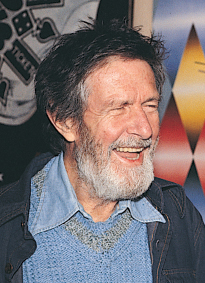John Cage (1912–1992)

The most consistent radical figure of postwar music was John Cage, the father of chance music. (Charles Ives has to count as the grandfather.) He studied with Schoenberg, among others — when Schoenberg was teaching in California, Cage’s home state — and early developed an almost bewildering variety of interests. Cage exhibited specially prepared prints, toured as music director of avant-
Cage posed questions that challenge all the assumptions on which traditional music rests. Why should music be different from the sounds of life? Why compose with “musical” sounds, rather than noises? Why work out music according to melodies, climaxes, twelve-